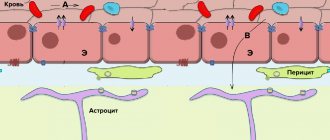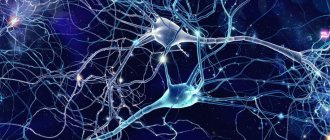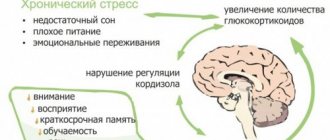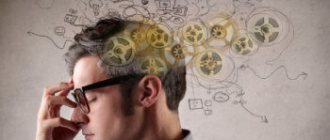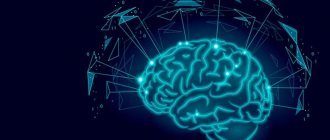The brain, like muscles, can adapt to stress. And those things that you do often become routine. How to train him? The main rule is to give the brain unusual, new information. Thanks to this, new neural connections will be formed, and the brain will develop. Here are some exercises you can use to do this.
Sweet doping: how sugar affects brain function
Change your image and make a rearrangement
The brain gets used to the environment - the arrangement of furniture in the house and objects on the desktop, the reflection in the mirror and a set of familiar clothes. It is not necessary to carry out major repairs and radically change the appearance. It is enough, for example, to periodically make small redevelopments and, in order to “shake up” perceptions, try new things in clothes.
Photo: istockphoto.com
Cyborgs are coming
It's more like the plot of a science fiction movie. American scientists have created a device capable of regulating a person's mood. This is not fiction. A patient with chronic depression had an electrode implanted into the area of the brain responsible for the release of happiness hormones. The device is equipped with a control panel that regulates the level of irritation. The man smiled for the first time in many years.
Today, scientists claim that they can increase memory capacity by 20% by implanting special implants into the human brain. But there is another side to the issue. Will the general population have access to these innovations?
Otherwise, there is a danger - the intellectual gap between the “modified” part of humanity and representatives of the protein mind will be greater than between the Europeans who discovered America and the savages. But this question already lies in the sphere of scientific ethics.
Engage your sense of smell
Have you been using the same perfume for years? It's time to change that! A good way to get your brain working is to rid it of the “aromatic” routine. The sense of smell is an important channel for the perception of reality. You also need to periodically add something unusual to it, be it new perfumes or spices when cooking.
Biohacking: is it possible to hack your body and gain eternal youth?
Living supercomputer
Brain functions are often compared to the work of a computer, although this comparison is very conditional. Our living “computer” consists of approximately 100 million neurons. According to the director of the Institute of the Human Brain, Academician Svyatoslav Medvedev, in order to describe the interactions between them, you will need a computer with a memory comparable in volume to the number of particles of the universe visible to us.
Information travels in the brain at a speed of 1400 m/sec. The computer does this much faster—in fact, at the speed of light. However, in terms of energy efficiency, it is an absolute outsider. The energy consumption of the brain is comparable to the power of a car battery, while at the same time tens of kilowatts are spent just on cooling powerful computers.
According to various estimates, our brain is a real Terra Incognita, studied at best by 15%. It remains a mystery how neurons are organized when the brain works so slowly, while its efficiency leaves far behind all the achievements of the most modern computers.
Use other routes
Home – work – home. This route may remain unchanged for years. The result is that the brain goes through it on autopilot, not getting involved in the process at all. Try to get to the office in different ways and thoroughly explore the area where you live, walk where you have not been before. And before traveling to a new place, carefully study the maps in advance and try to get to the desired point without looking at the map application and navigator tips.
Photo: istockphoto.com
Restoration of brain functions in psychiatry and neurology
Despite the fact that the importance of executive functioning for mental activity is difficult to overestimate, the range of its components, in my opinion, is not clearly outlined. Executive function (EF) refers to a number of abilities, including problem solving, planning, initiation, self-control, conscious attention, the ability to cope with new situations, and the ability to change plans when necessary. This is a high cognitive function that is extremely important for a person and allows him to maintain daily activities while maintaining a good quality of life. The executive function domain is associated with associations of psychopathological symptoms, cognitive reserve, rating scales, and cognitive rehabilitation programs.
"Frontal syndrome" and "disexploitation syndrome"
In the past, when studying patients with prefrontal damage, researchers have noted specific impairments in several functions, such as initiation, sequencing, flexibility, monitoring, judgment, planning, decision making, and difficulty when faced with new tasks. At the time, this functional disorder was called "frontal lobe syndrome," although some of these patients had neurologically intact frontal lobes. The inability to control these cognitive functions then became known as Dysexecutive Syndrome (DS). In this sense, DS is not necessarily associated with frontal lobe injury, but rather with a range of deficits in processing, planning, initiating behavior, maintaining that behavior, self-regulation, and self-control.
Frontal functions
There are at least four categories that relate to frontal functions but are not necessarily caused by frontal lobe injuries: energization, executive cognition, behavioral/emotional self-regulation, and meta-cognition.
"Energization" or excitement
The process of the necessary tone for the initiation and maintenance of any (certain) response mode in foreign literature is designated by the term “energization”.
Executive cognitive functions
Planning, monitoring the sequence of actions when solving problems and regulating behavior are in some cases referred to as executive cognitive functions.
Self-regulation of behavior/emotions
Necessary for solving difficult situations caused by external triggers, the habits and skills of cognitive analysis allow a person to independently regulate their emotions and behavior.
Meta-cognitive process
Integration of cognitions and emotions, aspects of personality, social cognitions, self-awareness, and adequate perception of humor are components of the meta-cognitive process.
Executive functions in psychiatry
Executive deficits are seen in many mental disorders, including attention deficit hyperactivity disorder (ADHD), post-traumatic stress disorder (PTSD), schizophrenia, and bipolar disorder. In mood disorders, patients have cognitive impairment associated with frontal regions, demonstrating decreased performance in verbal memory, cognitive flexibility, coping, metacognition, and self-regulation, especially compared to healthy subjects. In fact, the disease requiring the most cognitive rehabilitation is schizophrenia, where significant loss of brain volume can occur. In addition, patients with schizophrenia demonstrated a significant decline in social skills, which increased the need for cognitive rehabilitation and, in particular, restoration of full executive functioning. These methods (cognitive remediation) must combine neurocognitive and psychosocial components, the results of which have shown a positive impact on the functioning of these people in everyday life.
Executive functions in addiction medicine
Substance use disorders are also associated with executive impairments such as loss of cognitive flexibility, difficulty making decisions, and processing speed. Again, here we have hypofrontality of brain structures and networks.
Executive functions in neuroscience
Impaired executive functioning is also associated with subcortical disorders, in particular Parkinson's disease, progressive supranuclear palsy, Huntington's disease, Korsakoff's syndrome and dementia caused by inhalation of organic solvents.
Brain recovery
In this sense, two concepts that have gained prominence in discussions among neuropsychologists are of interest: brain reserve and cognitive reserve. Cognitive and brain reserve can reduce the risk of maladaptive behavior because it relates to the brain's ability to actively cope with damage through cognitive processes.
Working with the “brain reserve”
“Brain reserve” generally refers to certain characteristics of the brain that can vary between individuals, including size, neurogenesis, neuronal density, and synaptic connections. Numerous studies provide evidence that brain reserve may be malleable, and suggest that regular cognitive exercises in particular can significantly benefit those with schizophrenia. Education increases the growth of synapses in an infant or child. In addition, the effect of virtual reality exercises on patients with traumatic brain injury shows an improvement in some cognitive indicators.
"Cognitive reserve"
"Cognitive reserve" refers to the brain's ability to cope with problems using other cognitive resources. As a consequence, two people with the same degree of structural brain reserve may adapt more or less successfully to brain injury if one has a greater amount of “cognitive reserve,” that is, a greater variety of cognitive processes to recruit or use as compensation. The neural implementation of “cognitive reserve” can be divided into “neural reserve” and “neural compensation”. The former refers to differentially effective synaptic communication patterns, while "neural compensation" refers to the recruitment of brain regions not typically used by people without brain pathology to compensate for brain damage.
Good cognitive reserve can aid in recovery and compensation for injury through both neural reserve and neural compensation. This allows us to think about the consequences of brain damage in terms of neuroplasticity and cognitive rehabilitation.
Once the possibility arises that DS problems are positively associated with some structural damage, people with brain reserve have a sort of "fat to burn" while those with cognitive reserve may cope better and find different ways to solve the problem. Supporting these findings, some evidence from people with high levels of activity, such as being creative, reading, visiting friends, going to movies and restaurants, walking, and doing physical and mental exercise, suggests that these people have a lower risk of developing dementia.
Other studies have shown that patients with a history of premorbid brain disease experienced greater post-traumatic cognitive decline. On the other hand, as mentioned earlier, mental disorders can damage brain reserve, as seen in schizophrenia, where gray matter loss can reach 3% of the total brain volume, specifically 3.5% in the frontal lobe.
Executive Function Assessment
To select the best therapeutic program for brain recovery in schizophrenia, a good neuropsychological assessment is necessary, based on three main goals: measurement, diagnosis and interpretation of each measurement. Neuropsychological tests must individually distinguish cognitive components (dimensions), such as planning or self-control separately, and then indicate where errors are concentrated (diagnosis). The last part of the assessment is to decide what the rehabilitation will focus on (interpretation).
A virtual reality
Another method of neuropsychological assessment that has clearly expanded in recent years is the use of virtual reality (VR), which has also been used for cognitive rehabilitation purposes.
Difficulty assessing executive functions
Making a neuropsychological diagnosis when a person is not functioning effectively—due to their impulsivity, inability to plan, or inability to maintain assigned tasks—is not always easy when it comes to self-report. Moreover, in practice, it may be difficult to identify all aspects associated with behavior problems due to poor self-report ability. For example: poor attention or specific working memory deficits are often the first symptoms to come to our attention. As a consequence, the person's self-control deteriorates and, consequently, the patient does not notice problems as they arise.
Ecological relevance of neuropsychological tests
In this sense, some neuropsychologists debate the ecological validity of a reasonable number of neuropsychological tests. By “ecological” we mean how representative the test is of the life of a particular person. Some authors have suggested that most tests do not illustrate true clinical findings; probably because these assessments do not occur in everyday life, but are observed separately in standardized (non-environmental) tests. The "zoo map" and the "multi-errand test" are two examples that have strong ecological value. Here the patient must simultaneously solve several problems. This requires planning ability as well as good management skills to handle all the tasks. The patient mixes simple tasks when doing a dual-task exercise, especially multiple assignments, due to error patterns. These tests are closer to the real world situation than other tests, which can be great EF tests, but not to the common behaviors we are used to implementing every day. The Behavioral Memory Test is another valid environmental test used to assess everyday memory problems and identify moderate to severe impairments, but minor memory impairments may go undetected here in some patients who score within the normal range.
Impulsiveness
Another manifestation of executive deficit may be impulsivity: for some patients, the problem is not so much the inability to look ahead or anticipate consequences, but rather the difficulty of inhibiting one's desires or impulses in response to changes in the external situation.
Rehabilitation programs
Modern rehabilitation programs consider functional assessment to be the most revealing. They analyze the patient's behavior in situations where there is a deficit and notice the exact stage at which the person breaks down. By focusing on gradually increasing the patient's autonomy, we will achieve a greater number of hits that can be achieved through cognitive rehabilitation. Virtual cognitive remediation programs are of particular interest. Virtual reality technology has been found to be a good treatment and assessment tool in several contexts. VR has been used as a way to improve the ecological validity of tests because a wide range of possibilities and situations can be simulated in a virtual world. Instead of simulating normal activities, V-STORE simulates a store where patients must pick up groceries from a Virtual Action-Planning Supermarket, simulating everyday running of errands.
The goal of every executive rehabilitation program should be to improve or provide greater autonomy to individuals in everyday situations, allowing them to solve problems (within their capabilities) rather than getting stuck in a vicious cycle in which executive skills are not used.
Basically, rehabilitation programs for prefrontal disorders can be divided into four areas (see above).
Working memory
In the context of prospective memory, retraining is a technique in which the client performs a specific action repeatedly with increasing periods of time between each action. This interval search is a useful and well-known method for learning information. As long as this is successful, we can strengthen retrospective memory to provide the necessary support for future memory. This method is very useful for people with Alzheimer's disease to complete a daily prospective memory task displayed on a calendar (Fish et al., 2009). In addition, it can support the executive component using free pathways or integrative approaches aimed at increasing awareness of difficulties and increasing the use of compensatory strategies.
Supervision of attention
Since the development of the supervisory attention system (SAS) model, it has become clear that everyday functioning is a highly complex and dynamic interaction of automatic routine behavior and consciously controlled action.
Read color words
The names of the colors are written on the picture for this exercise (the name and color of the word do not match). You need to name the color, and not read the text. This is more complicated than it might seem at first glance. Try it!
How to develop quick thinking in football? Improving skills for progressive play
A comprehensive diet for brain function
The brain diet is considered the smartest nutrition system. It not only provides a high-quality supply of nutritional components to the nervous system, but also significantly improves well-being, improves mood and performance. Before you start making recommendations, carefully analyze your menu and determine your food preferences. It is with bad eating habits that you should break up first.
Dangerous food
Eliminating fried, fatty and high-calorie foods will help not only improve brain function, but also lose extra pounds. First of all, you need to achieve a balance between the main nutritional components: proteins, carbohydrates and fats.
Omega-3
Dangerous fats of animal origin should be replaced with polyunsaturated fatty acids (omega-3), which play a vital role in the functioning of the nervous system. The basis of the meat part of the diet should be fish and seafood. A large number of these components are contained in vegetable oils: flaxseed, olive, sunflower.
Salt
Be sure to reduce salt - up to 5 g of this product per day is acceptable.
Alcohol
You should not drink alcohol at all (with the exception of natural red wine).
Fruits
The body will be provided with glucose by fresh fruits, of which there should be as much as possible in the diet.
Vegetables
The amount of fresh vegetables per day should be at least 500-600 g.
Drinking regime
It is extremely important to maintain an optimal drinking regime - you should drink at least 8 glasses of clean still water per day.
Protein
Important sources of protein include dairy products, eggs, seeds and nuts.
Eat nuts!
It’s not for nothing that Mother Nature made walnuts look like the human brain. Why? In fact, they have a significant impact on this organ. Researchers from Harvard Medical School were able to prove that walnuts can stimulate neural activity in the area of the brain that is responsible for decision making. According to experts, eating three walnuts is enough to meet your daily requirement of omega-3. Although they contain many antioxidants that have anti-aging effects on the body, you should not overdo it. They are quite high in calories (about 666 kcal per 100 g). In addition to walnuts, eat almonds (lowers blood pressure) or iron-rich cashews.
Character Development
In the last section I touched lightly, but here I will try to expand on the topic of working on oneself.
It turns out that almost 100% of a person’s life is the work of his hands, or rather, his brain. Our thoughts are what determines our actions and our character. It can be said that responsibility for almost every aspect in a person's life lies with him, whether he realizes it or not. Practical points that were useful to me (I continue to work on most of them now):
- Speech control. We hear almost everything we say. And if we constantly repeat something out loud, we soon begin to believe in it ourselves, and with our actions we make it happen in reality. This means that if you constantly tell others that you are sick and hear your own words, you will eventually get sick; the same thing about lack of time - there will not be enough time, and so on. Therefore, I try to speak confidently, positively, and little.
- Thought control is still the same. It is thoughts that determine the way of life, and correct thinking immediately gives a huge advantage over 95% of people who do not know about it. This is difficult for me, but I try different ways - from meditation to relax, music to create a positive mood, a notepad and psychological readiness to generate ideas, to willful efforts to suppress thoughts of worry, failure, anxiety, fear, and so on.
- Emotional control. Feelings are much like waves, we can't stop them from coming but we can choose which one to surf. © Jonatan Mårtensson. A sense of humor helps a lot - in a sad situation I always try to remember some joke or aphorism in order to smile. The ability to be calm, for example, in line at Sberbank also helps - over time, I began to wonder why people are so irritated by waiting. The fact is that emotions are poorly compatible with concentration and concentrated mental work, so it is worth learning self-control in order to allow the brain to work at full capacity.
- Strong-willed qualities, leadership qualities. Perseverance, will, the ability to go to the end, patience - this helps a lot. Once I spent 8 hours solving a “failed” problem in the VMK oral exam, so that I could later publish the solution on the forum and gain satisfaction with myself. A useful quality that helps you achieve and enjoy results.
- Ability to communicate. I started life as a black sheep, and at school it was difficult to communicate, I was a withdrawn and depressed person. Over time, through effort, I made myself optimistic, cheerful, and learned to find a common language with almost any people. It all came down to the development of adequacy and the ability to listen to the interlocutor combined with empathy, and of course - a lot of practice.
Listen to music!
High-frequency sounds (typical of baroque music, violins, guitars or harps) have a positive effect on the functioning of brain waves. In turn, low frequencies, typical of traffic or airport noise, deplete the brain and can only tire you. Many people can only concentrate in complete silence. Others benefit from the sounds of nature or calm music.
Child development or how age affects the performance of the central nervous system
Most scientists adhere to the hypothesis that humans have an innate ability to learn. True, this ability has its age restrictions.
A striking example of this phenomenon is “Mowgli” - a child raised in a wild environment. The boy had no contact with people. Having entered a civilized society as a teenager, he never learned to speak clearly and was unable to become a full-fledged member of society.
Professional athletes who achieved high results began their training in early childhood.
A child's brain is receptive to new things, but if the foundations are not laid at a certain age, it will become more difficult to do so over time. It is believed that physiologically the human brain continues to grow until approximately 24-26 years of age.
Further, endurance and creativity gradually give way to experience and professional intuition.
Solve crosswords
What activities can best protect our brains from memory loss? Scientific research conducted by researchers from King's College London and the University of Exeter shows that the best results can be achieved in this regard... by solving crossword puzzles!
Although in this case people over 50 years of age can benefit the most, however, even if you are much younger, all logic games (from Sudoku to chess) can only improve our health and facilitate the process of memorizing information.

